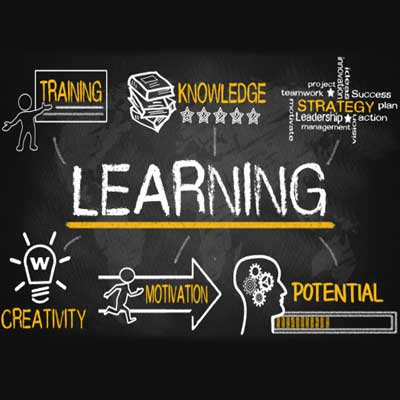Employee Training – Post Covid Trends in L&D | Aparna Sharma | Consulting Editor | The People Management
 COVID-19 has changed the way employees learn and work across the world. With more and more organizations shifting to remote working, remote training, newer learning tools have been adopted to sustain learning during the pandemic.
COVID-19 has changed the way employees learn and work across the world. With more and more organizations shifting to remote working, remote training, newer learning tools have been adopted to sustain learning during the pandemic.
So much has evolved in the L&D space since the beginning of the outbreak that Learning and Development (L&D) professionals have had to abruptly adapt to frequently changing circumstances. This has required measures such as cancelling of face-to-face events, digitizing of training, and more.
Many are still wondering about how the employee learning landscape will look like in the post-COVID world.
Here are some of the trends in the L&D space that we might see in the future –

1. Shift to Virtual Training –
With remote working becoming the new normal in today’s pandemic-hit world, virtual training for remote workers is seeing a sharp upward trend & will continue in the future too.
More and more organizations are exploring and adapting to the new communication tools and collaborative practices to train their employees that were not very common before the pandemic.
Embracing this new virtual training approach that focuses on reconstituting the content delivery methods and adjusting the standards for learning goals has led to a rise in the virtual training investment across the board.
But to make it work, organizations need to ensure that the current L&D approach is taken as a permanent way of delivering training instead of a temporary fix.
2. Embracing New Technologies –
Historically, L&D professionals across the industry have been at the forefront of embracing new technologies. In the post-COVID-19 era, it has become more critical for them to do so. Organization and training managers need to focus on technology with respect to the following areas –
• How can they take advantage of a learning management system (LMS) or learning content management system (LCMS) more effectively?
• Do they have collaboration tools that will enable them to reach remote employees who can no longer gather in an office space?
• How can they leverage technology to enable employees to receive feedback?
3. More Emphasis on Social Learning Methods –
The adoption of social learning methods is another key L&D trend that has emerged as a result of the pandemic.
Today, delivering effective and engaging learning experiences that amplify the success of an organization’s learning strategy are critical to a business’s bottom line. Deploying social learning concepts and technologies as part of the employee learning mix will no longer be an option, but a necessity.
Unlike traditional learning models, social learning favors a real-life approach to learning and focuses on how employees interact with their peers for just-in-time learning and skill acquisition, adopting a 70:20:10 learning framework.
We have seen many organizations embracing social learning methodologies throughout the remote working period, monitoring their effectiveness and progress, and adjusting their approach to L&D accordingly.
4. Changing L&D Budgets –
In tough times, the vast majority of businesses cut spending across functions, including investments in L&D. But, the present scenario is very different from earlier financial crash events. The world today is changing so fast that employees need constant training to keep up. This means that Learning and Development is crucial to prepare their staff for the present & future.
To cope up, businesses are focusing on use of digital technology to power up their employee training while maintaining a standard ROI. This also requires them to adopt a strategic mindset of using the tools available to reduce risks and increase return on investment while helping the organization hit key business goals.
Recent research into the changes caused by COVID-19 has also found that the following learning approaches have the most impact on the organization’s L&D budget, and hence they should focus on spending in these areas to have an impact on their business –
• Curated content
• Mobile learning
• Video learning
• Blended learning
• Microlearning
• Customized eLearning
5. Growing Focus on Soft Skills Training –
With technology taking center stage, coupled with evolving business practices through automation and artificial intelligence (AI), the focus is shifting on imparting soft skills like agile thinking, creativity, communication, and collaboration.
To truly develop these skills, employees will require multiple digital training experiences over an extended period of time to learn and practice them.
There will be a continued focus on soft skills training in the future, and L&D professionals will be required to create comprehensive learning experiences to develop these critical skill sets.
6. Socially Distanced Learning –
More and more businesses in the future will use digital classrooms to support their blended learning strategy. While this is an easy option for instructors as they can deliver the exact same classroom session as before, maintaining employee engagement with online classrooms is not an easy task.
In a world of online fatigue, there is always a risk of employees losing focus, which will make socially distanced classrooms essential to the smooth running of the business’s L&D goals.
However, this will have its own challenges. Since the social distancing guidelines require classroom capacity to be greatly reduced, it will lead to smaller classrooms, more sessions, and more expenses to the business.
To Conclude:
Employee capability building has always been at the forefront of progressive organizations, and this necessitates having strong L&D practices.
 The strategic focus of any learning-centric organization largely remains on strengthening digital and virtual learning programs and learning in the flow of work. The COVID-19 pandemic has been a catalyst for this digital transition and has resulted in L&D professionals speeding up their efforts to make the learning function entirely virtual via the digital methods.
The strategic focus of any learning-centric organization largely remains on strengthening digital and virtual learning programs and learning in the flow of work. The COVID-19 pandemic has been a catalyst for this digital transition and has resulted in L&D professionals speeding up their efforts to make the learning function entirely virtual via the digital methods.
Although the trends in L&D typically transform every year, the ongoing health crisis has made it all the more important to think about technology-backed learning and development as a business strategy to stay ahead in this ever-evolving corporate ecosystem.
The above-mentioned L&D trends have been gathering pace for some time now and are set to intensify further in the future. This creates both challenges and opportunities for L&D professionals across organizations to design and shape the future of their employee training efforts.


